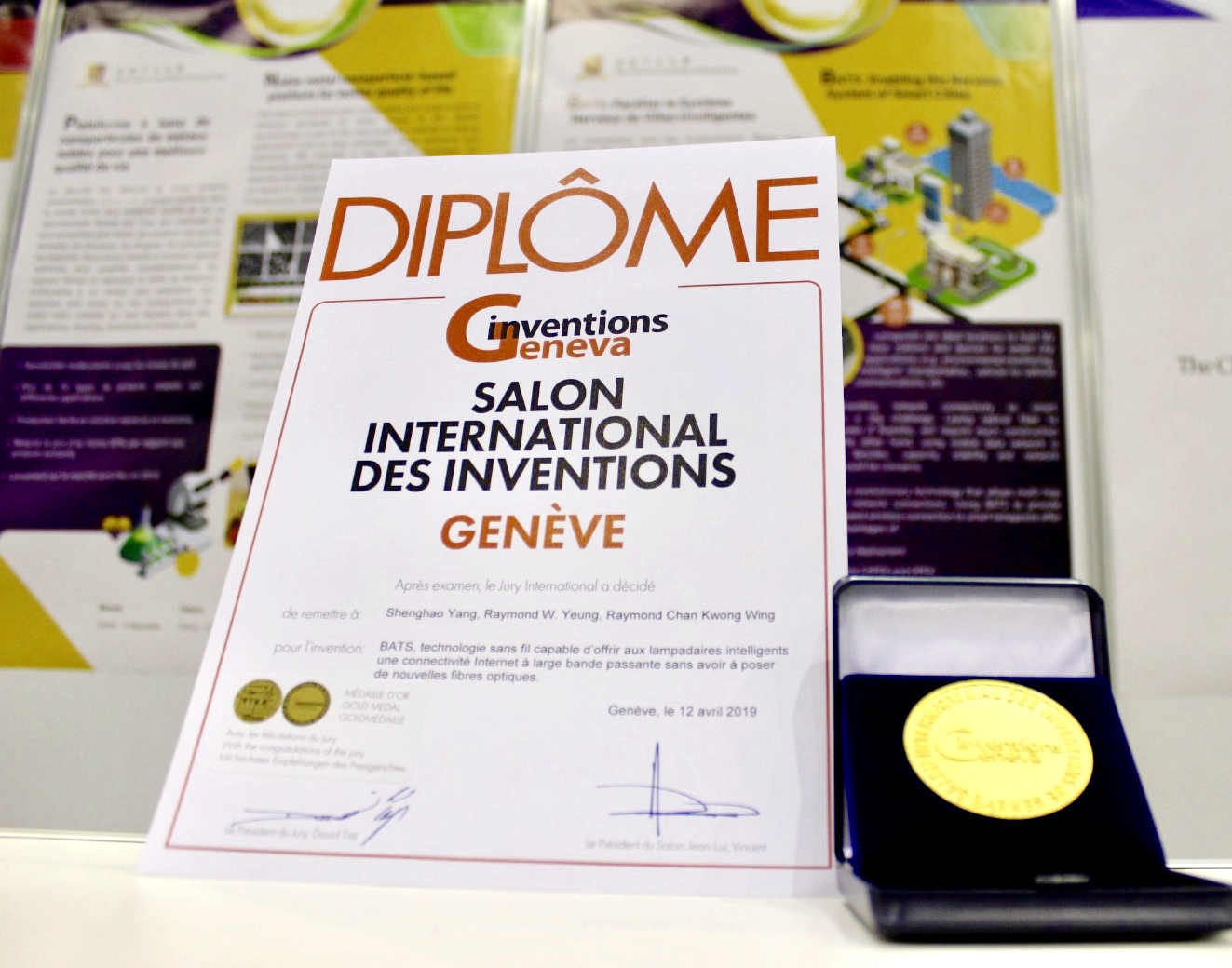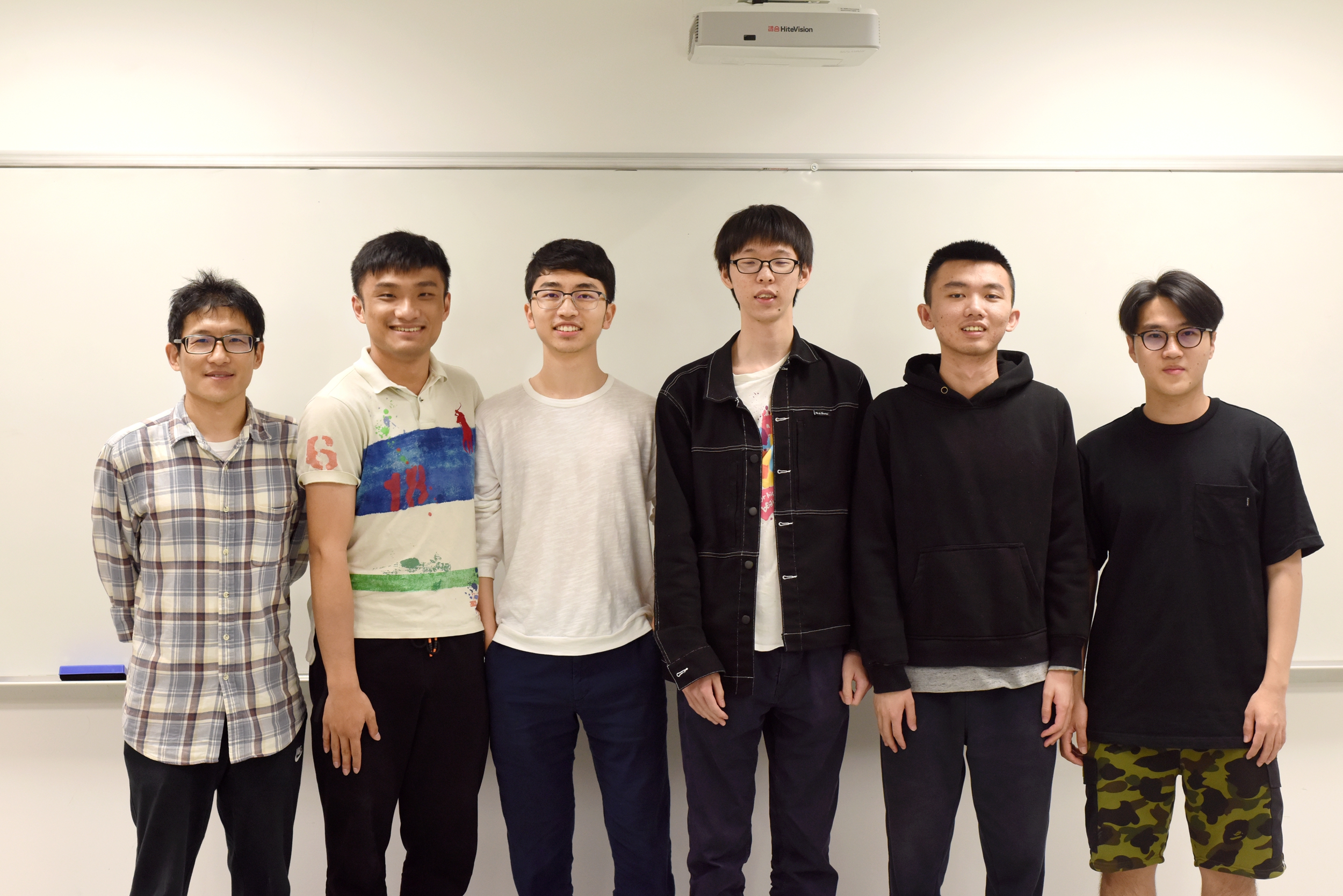Professor Shenghao Yang led his students in developing new technologies that won international awards and applied to smart lamppost in Hong Kong

Recently, the project “Batch Sparse Coding -- Building Smart City” of The Chinese University of Hong Kong, Shenzhen Professor Shenghao Yang’s team won the Special Gold Award in the 47th International Exhibition of Inventions held in Geneva, Switzerland. This technology is being applied to the Hong Kong smart lampposts.
Batch Sparse (BATS) Code is an advanced network coding technology co-invented by Professor Shenghao Yang, which can solve the long-standing problem of the low efficiency of multi-hop wireless communications. This technology can be applied to build large-scale smart city network infrastructure. For example, using a multi-hop wireless network solution based on BATS code, it is possible to connect street lampposts to each other through wireless communication links without laying new optical cables for smart street lampposts. Compared with the use of 4G/5G wireless communication services, multi-hop wireless network has lower operation cost, stronger security, and more stable bandwidth.
This technology will provide an economical and friendly solution for large-scale smart street lampposts projects, accelerating the construction of smart cites and improve the technological level of citizens’ life. This year, the Hong Kong government launched the “multi-functional smart lamppost” pilot project: 52 lampposts have been installed in Kwun Tong, Kowloon Bay and other places in Hong Kong. The lamppost system integrates positioning, Wi-Fi and 5G base station functions, which can also be used to place smart devices and collect urban data. The smart street lamppost project will use multi-hop wireless network communication technology developed by the Chinese University of Hong Kong (Shenzhen) to provide wireless network connectivity for street lampposts.
This project is another important scientific research achievement of the Shenzhen Key Laboratory of loT Intelligent Systems and Wireless Network Technology of our university, which is supported by scientific research funds of Shenzhen Science and Technology Innovation Committee. Under the guidance of Professor Shenghao Yang, the project was mainly developed by five sophomores and five seniors from School of Science and Engineering. The five seniors in the team have been working in the lab for more than two years: They are Mao Licheng and Huang Xuan from Shaw College; Jin Sheng, Tao Yuezhan and Zhou Zhengxiang from Diligentia College. After graduation, three of them will pursue doctoral degrees in universities in mainland China and Hong Kong, and two others will pursue master’s degrees in the United States. They have received admissions from many world-famous universities, including New York University, Johns Hopkins University, University of California, San Diego, Chinese University of Hong Kong, City University of Hong Kong and so on. The five sophomores are Liu Yanxiao, Wang Xingjian and Wu Chenhao from Muse College, and Chen Yanzuo, Wu Xuanchen from Shaw College.

From left to right: Prof. Shenghao Yang, Student Mao Licheng, Jin Sheng, Huang Xuan, Zhou Zhengxiang, Tao Yuezhan
